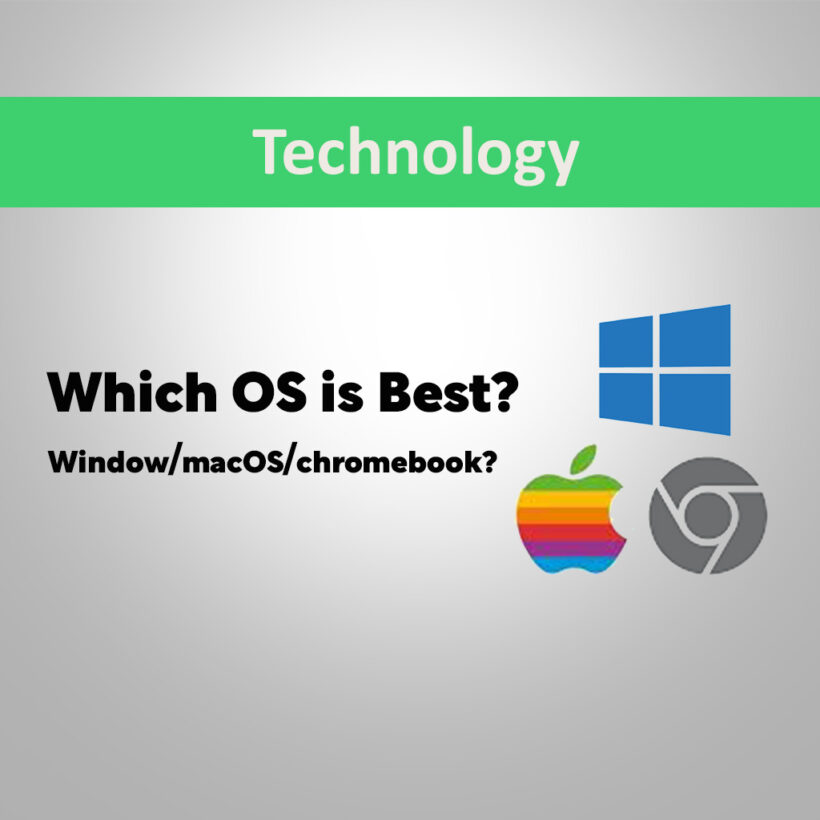This post helps you to dive into our detailed comparison of Windows, macOS, Linux, and ChromeOS to discover the best OS for productivity, gaming, security, and more.
Introduction
Choosing the right operating system (OS) is critical for optimizing your security, efficiency and overall user experience. With four major players—Windows, macOS, Linux, and ChromeOS—dominating the market, the decision can feel overwhelming. Each OS caters to different needs, budgets, and technical expertise.
In this blog, we’ll guide you and show all the pros and cons of OS that you should know before purchasing them. Whether you’re a gamer, developer, creative professional, this guide will ensure you pick the perfect OS for 2025.
1. Windows: The Versatile Powerhouse
Best For: Gamers, Professionals, and General Users
Overview:
Microsoft Windows controls the world OS market with a 72% share (StatCounter, 2023). Its power is in its versatility, wide software compatibility, and ease of use.
Pros:
- Broad Software Compatibility: Runs nearly all mainstream software, including AAA games (via DirectX 12), productivity tools (Microsoft Office), and industry-specific applications.
- Hardware Diversity: Compatible with thousands of devices, from budget laptops to high-end gaming rigs.
- User-Friendly Interface: Intuitive design with features like Snap Layouts (Windows 11) for multitasking.
- Regular Updates: Monthly security patches and annual feature upgrades.
- Gaming Dominance: Supports Xbox Game Pass, Steam, and VR platforms like Oculus.
Cons:
- Costly Licenses: Windows 11 Pro licenses can exceed $200, and OEM devices often include bloatware.
- Security Vulnerabilities: Frequent malware attacks due to its popularity; requires antivirus software.
- Performance Overhead: Background processes can slow down older hardware.
2. macOS: The Premium Ecosystem
Best For: Creatives, Apple Enthusiasts, and Security-Conscious Users
Overview:
macOS powers Apple’s MacBooks, iMacs, and Mac Studios, renowned for their seamless integration with iPhones, iPads, and Apple Watch.
Pros:
- Optimized Performance: macOS is tailored for Apple hardware, ensuring buttery-smooth performance.
- Creative Suite: Industry-standard tools like Final Cut Pro, Logic Pro, and Adobe Creative Cloud run flawlessly.
- Security: Robust encryption, Gatekeeper, and sandboxed apps minimize malware risks.
- Ecosystem Integration: Handoff, AirDrop, and Universal Clipboard enhance productivity.
Cons:
- Price: Apple hardware is expensive than other OS devices.
- Software Limitations: Fewer games and niche apps compared to Windows.
- Customization: Limited hardware/software tweaking for advanced users.
Mostly Used by:
Designers, video editors, and musicians.
Users invested in the Apple ecosystem.
3. Linux: The Customizable Open-Source OS
Best For: Developers, Privacy Advocates, and Tech Enthusiasts
Pros:
- Customization: Alter each component of the OS, ranging from kernels to desktop environments.
- Privacy & Security: Low malware threats and open code auditing.
- Free & Lightweight: Perfect for bringing back old hardware.
- Developer-Friendly: Native support for programming languages (Python, C++) and utilities such as Docker.
Cons:
- Learning Curve: Needs terminal commands for complex tasks.
- Software Gaps: Poor Adobe, Microsoft, and gaming support.
- Hardware Compatibility: Certain peripherals (e.g., GPUs) have no driver support.
Mostly Used by:
- Developers, sysadmins, and cybersecurity experts.
- Users that need necessary to have full control over their OS.
- Privacy-focused individuals avoiding corporate ecosystems.
4. ChromeOS: The Cloud-Centric Contender
Best For: Students, Casual Users, and Budget Buyers
Overview:
ChromeOS, found on Chromebooks, is a lightweight OS centered around Google Workspace and web apps.
Pros:
- Affordability: Chromebooks start under $200.
- Simplicity: Easy to use with automatic updates.
- Speed: Boots in seconds and runs smoothly on low-end hardware.
- Android App Support: Access Google Play Store apps.
Cons:
- Offline Limitations: Relies heavily on internet connectivity.
- Software Restrictions: Cannot install Windows/macOS applications.
- Storage: Limited local storage (often 32–64GB).
Head-to-Head Comparison
| Features | Windows | macOS | Linux | ChromeOS |
| Ease of Use | High | High | Moderate | Very High |
| Software | Extensive | Creative Suite | Open-Source | Web-Andoid Apps |
| Gaming | Excellent | Limited | Moderate | Poor |
| Security | Moderate | High | Very High | High |
| Customization | Moderate | Low | Very High | Low |
| Price | $200 or More | $600 | Free | $200 |
Conclusion
There isn’t a one-size-fits-all “best” OS—it varies based on your individual needs. Windows is best for versatility, macOS for creative workflows, Linux for customization, and ChromeOS for affordability. Rank your priorities, try out various systems, and select the OS most suited to your intentions.


